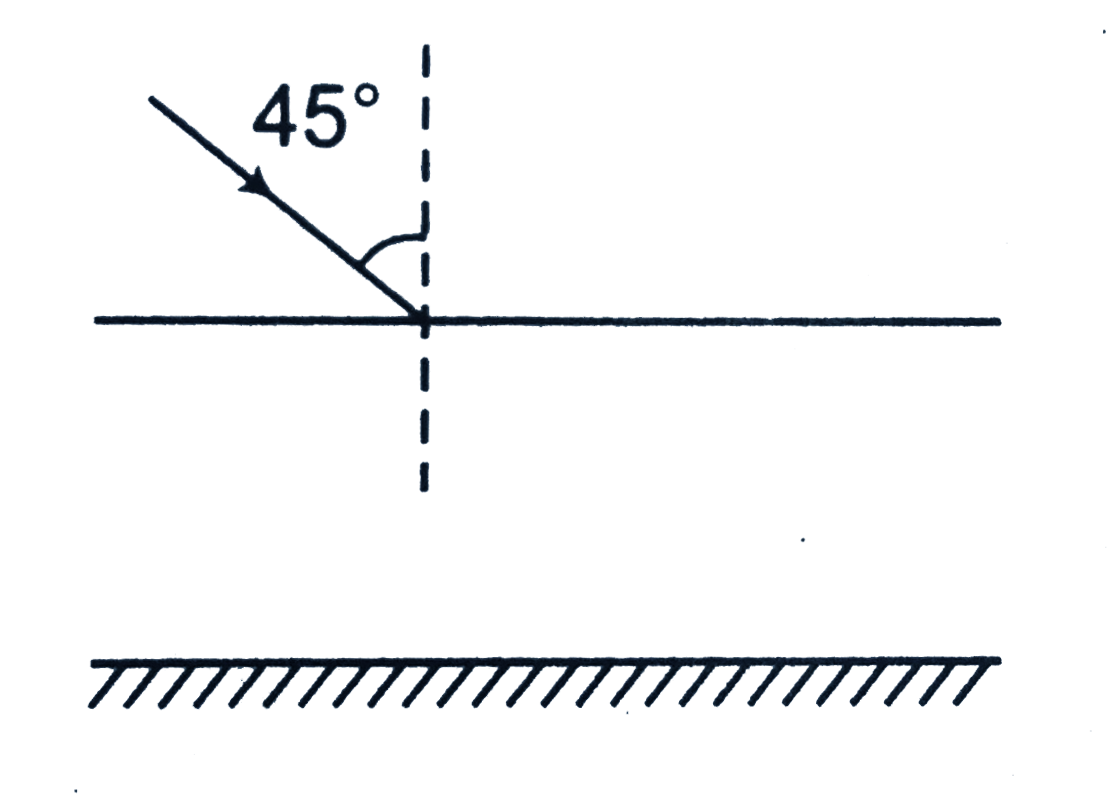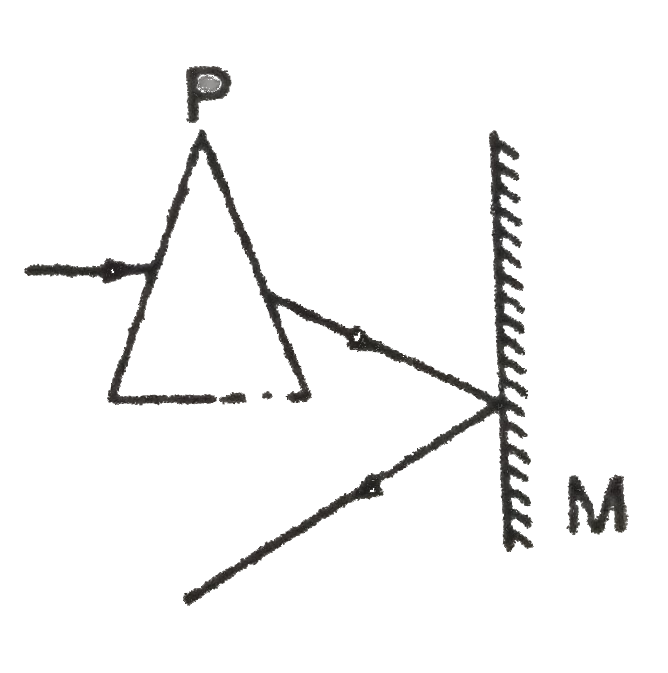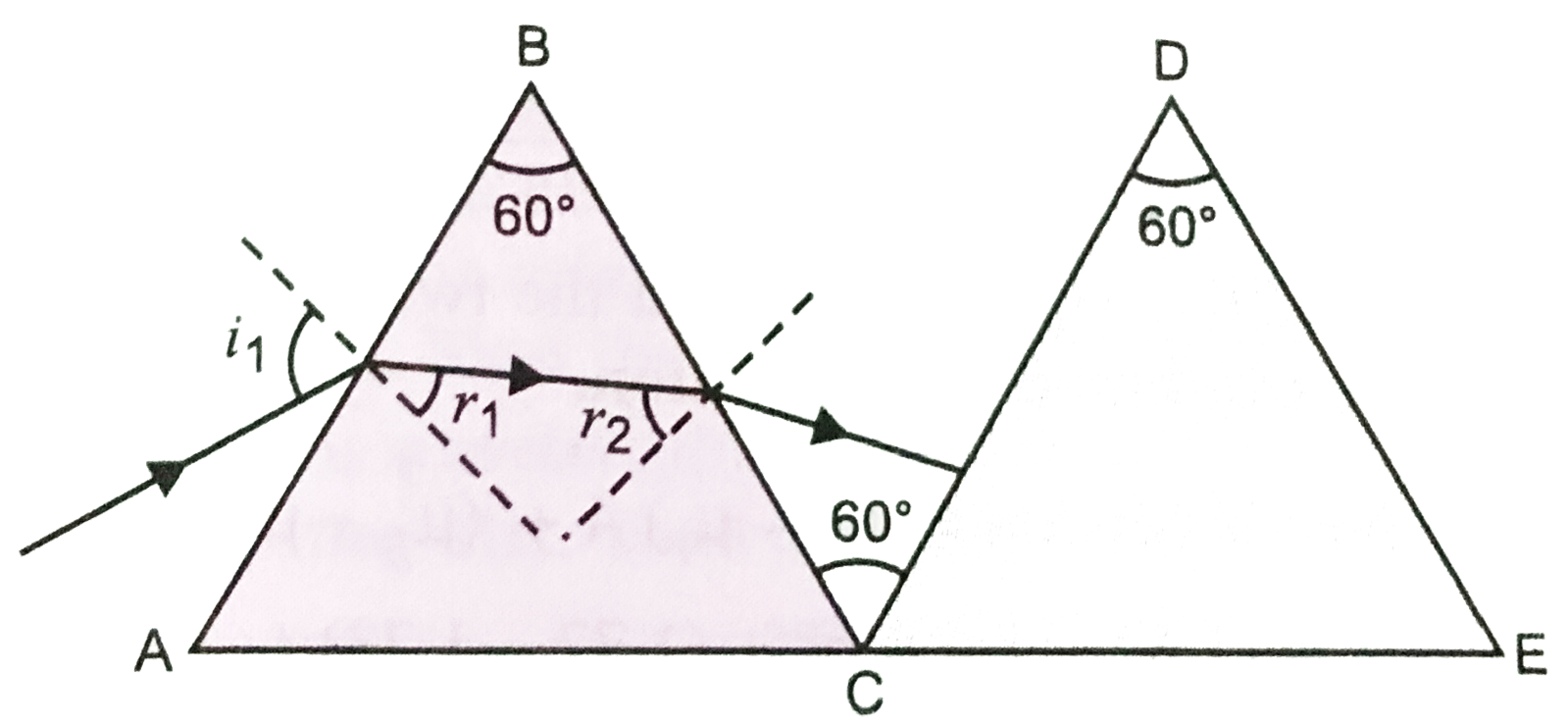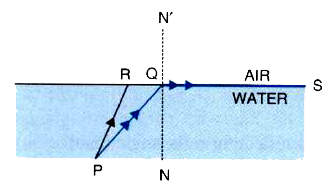You are given water, mustard oil, glycerine and kerosene. In which of these media a ray of light incident obliquely at same angle would bend the most ?
Kerosene
Water
Mustard oil
Glycerine
The correct Answer is:D
To determine in which medium a ray of light will bend the most when incident obliquely at the same angle, we need to consider the refractive indices of the given media: water, mustard oil, glycerine, and kerosene.
1. Understand Refraction: When light passes from one medium to another, it bends. The amount of bending depends on the refractive indices of the two media involved.
2. Identify the Refractive Indices: The refractive index (n) is a measure of how much light slows down in a medium compared to air. The refractive indices for the given media are approximately:
- Water: n ≈ 1.33
- Mustard Oil: n ≈ 1.47
- Glycerine: n ≈ 1.47
- Kerosene: n ≈ 1.44
3. Apply Snell's Law: Snell's Law states that:
n1sin(i)=n2sin(r)
where n1 is the refractive index of the first medium (air, which is approximately 1), i is the angle of incidence, n2 is the refractive index of the second medium, and r is the angle of refraction.
4. Analyze the Relationship: From Snell's Law, we can derive that:
sin(r)=n1n2sin(i)
This implies that as n2 (the refractive index of the second medium) increases, sin(r) decreases, leading to a smaller angle of refraction r. Thus, the bending of light is inversely proportional to the refractive index of the medium.
5. Determine the Medium with the Highest Refractive Index: The medium with the highest refractive index will cause the light to bend the most. From the values we have:
- Glycerine and mustard oil have the same refractive index (1.47), but glycerine is often noted to have a slightly higher effective refractive index in practical applications.
6. Conclusion: Since glycerine has the highest refractive index among the given options, a ray of light incident obliquely at the same angle will bend the most in glycerine.
Final Answer:
The ray of light will bend the most in glycerine.
- Water: n ≈ 1.33
- Mustard Oil: n ≈ 1.47
- Glycerine: n ≈ 1.47
- Kerosene: n ≈ 1.44
n1sin(i)=n2sin(r)
where n1 is the refractive index of the first medium (air, which is approximately 1), i is the angle of incidence, n2 is the refractive index of the second medium, and r is the angle of refraction.
sin(r)=n1n2sin(i)
This implies that as n2 (the refractive index of the second medium) increases, sin(r) decreases, leading to a smaller angle of refraction r. Thus, the bending of light is inversely proportional to the refractive index of the medium.
- Glycerine and mustard oil have the same refractive index (1.47), but glycerine is often noted to have a slightly higher effective refractive index in practical applications.
The ray of light will bend the most in glycerine.
Topper's Solved these Questions
- BOOK - NCERT EXEMPLAR ENGLISHCHAPTER - LIGHT : REFLECTION AND REFRACTIONEXERCISE - Short Answer Type Questions10videos
LIGHT : REFLECTION AND REFRACTION
- BOOK - NCERT EXEMPLAR ENGLISHCHAPTER - LIGHT : REFLECTION AND REFRACTIONEXERCISE - Long Answer Type Questions9videos
LIGHT : REFLECTION AND REFRACTION
- BOOK - NCERT EXEMPLAR ENGLISHCHAPTER - ELECTRICITYEXERCISE - Short Answer Type Questions17videos
ELECTRICITY
- BOOK - NCERT EXEMPLAR ENGLISHCHAPTER - MAGNETIC EFFECTS OF ELECTRIC CURRENT EXERCISE - LONG ANSWER TYPE QUESTIONS8videos
MAGNETIC EFFECTS OF ELECTRIC CURRENT
Similar Questions
You are given kerosene, turpentine and water. In which of these does the light travel fastest ?
View SolutionOne side of a glass slab is silvered as shown in the figure. A ray of light is incident on the other side at angle of incidence 45∘. Refractive index of glass is given as √2. The deflection suffered by the ray when it comes out of the slab is
 View Solution
View SolutionA prism having an apex angle of 4∘ and refractive index of 1.50 is located in front of a vertical plane mirror as shown in the figure. A horizontal ray of light is incident on the prism. The total angle through which the ray is deviated is:
 View Solution
View SolutionThe critical angle for a given transparent medium and air is ic. A ray of light travelling in air is incident on this transparent medium at an angle of incidence equal to the polarising angle ip, What is the relation between the two angles ic and ip ?
View SolutionA ray of light is incident on a prism ABC of μ=√3 as shown in Fig. Find the angle of incidence for which the deviation of light by the prism ABC is minimum.
By what angle should the second prism be rotated so that final ray suffers net minimum deviation ?
 View Solution
View SolutionIn figure, PQ and PR are the two light rays emerging from an object P. the ray PQ is refracted as QS.

(a) state the special name given to the angle of incidence ∠PQN for the ray PQ.
(b) What is the angle of refraction for the refracted ray QS?
(c) Name the phenomenono that occurs if the angle of incidence ∠PQN is increased.
(d) The ray PR suffers partial reflection and refraction on the water-air surface. give reason.
(e) Draw in the diagram the refracted ray for the incident ray PR and hence show the position of the image of the object P by the letter P' when seen vertically from above.View SolutionIf a ray of light in a denser medium strikes a rarer medium at an angle of incidence i, the angles of reflection and refraction are respectively, r and r' If the reflected and refraction rays are at right angles to each other, the critical angle for the given pair of media is
View Solution(a) State Snell's law of refraction of light.
(b) A transparent medium A floats on another transparent medium B. When a ray of light travels obliquely from A into B, the refracted ray bends away from from the normal. Which of these two media A or B are optically denser and why ?View SolutionA : When a diver under water looks obliquely at a fisherman standing on the bank of a lake then fisherman looks taller.
R : When a ray of light travelling in air enters water, it bends towards the normal.View SolutionMonochromatic light is incident on a glass prism of angle A. If the refractive index of the material of the prism is μ, a ray, incident at an angle θ, on the face AB would get transmitted through the face AC of the prism provided:
 View Solution
View Solution

